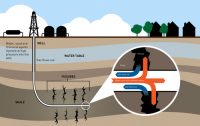Costly Settlement Preserves Rare Wetlands
Settlement Preserves Rare Wetlands In mid-August 2014, the EPA and the Department of Justice (DOJ) reached a settlement with the owners of a California ranch for violations of the CWA involving the destruction of more than 80 acres of rare wetlands in Tehama County. According to the EPA, the wetlands, known as “vernal pool” wetlands […]










